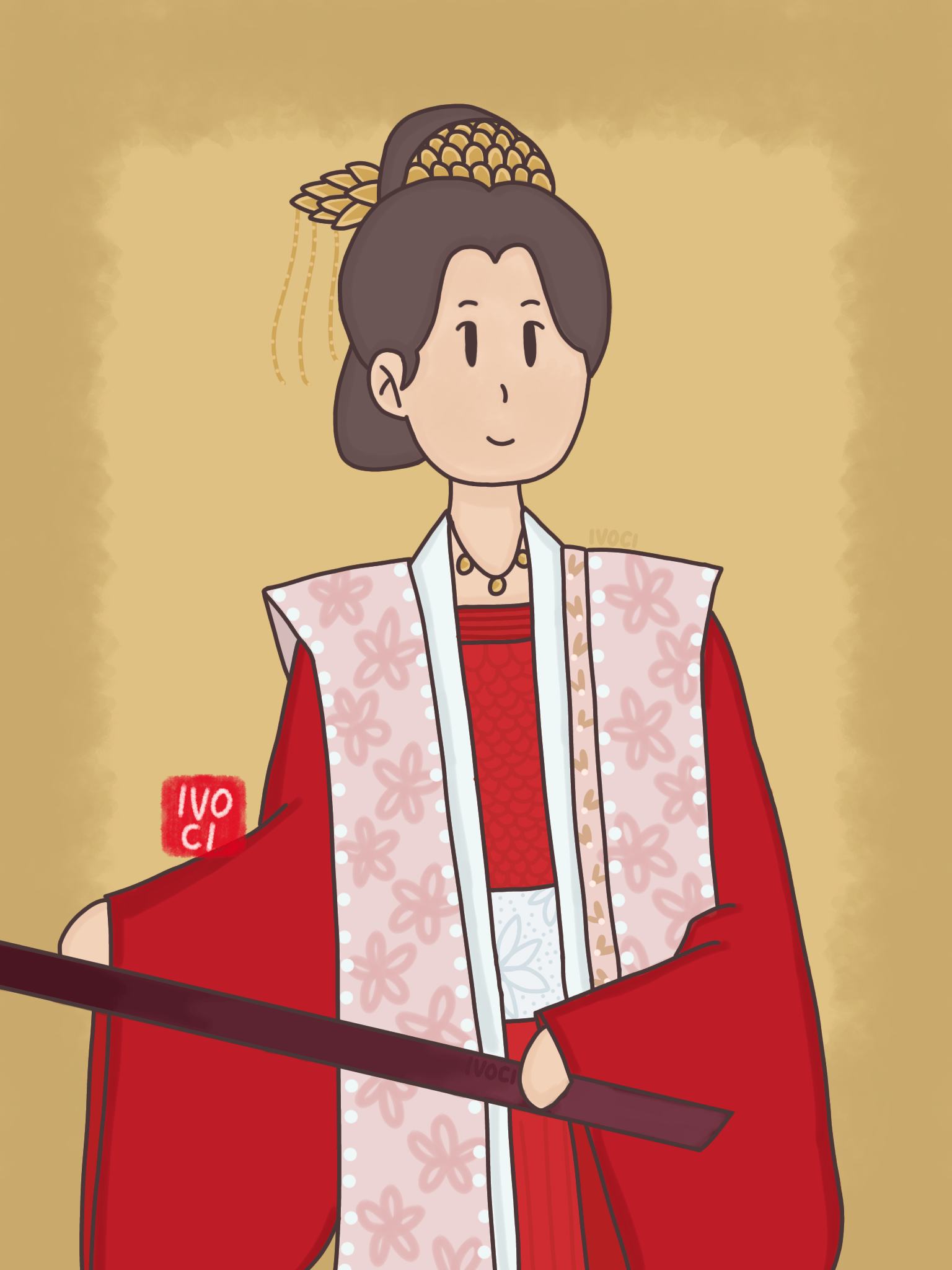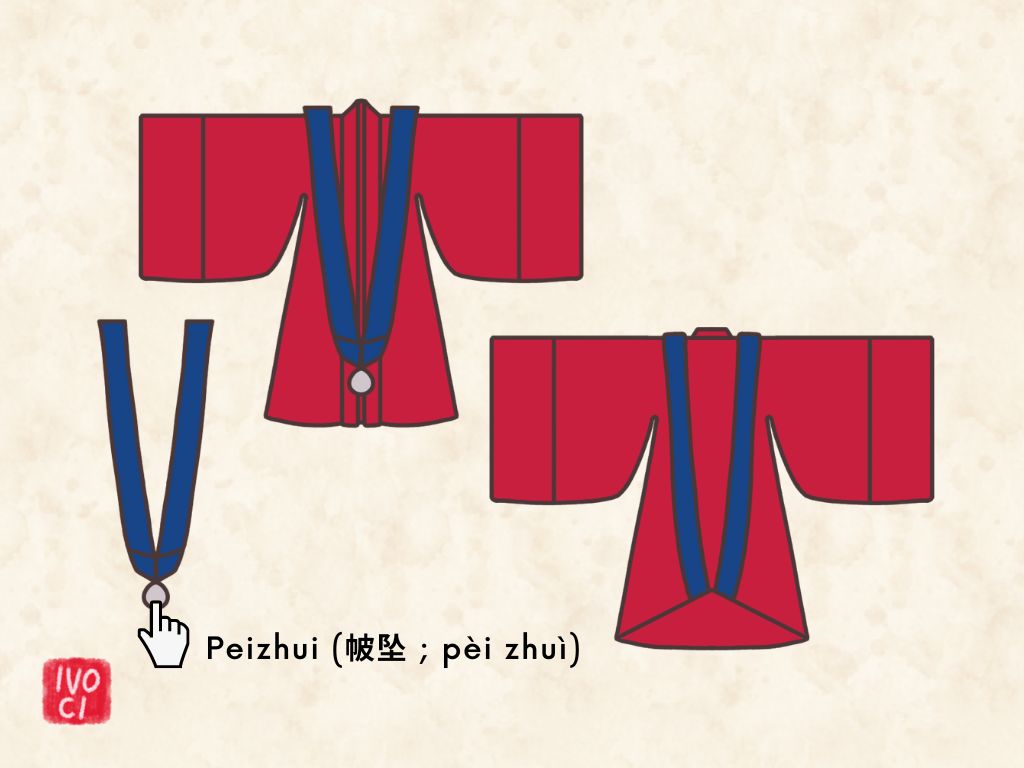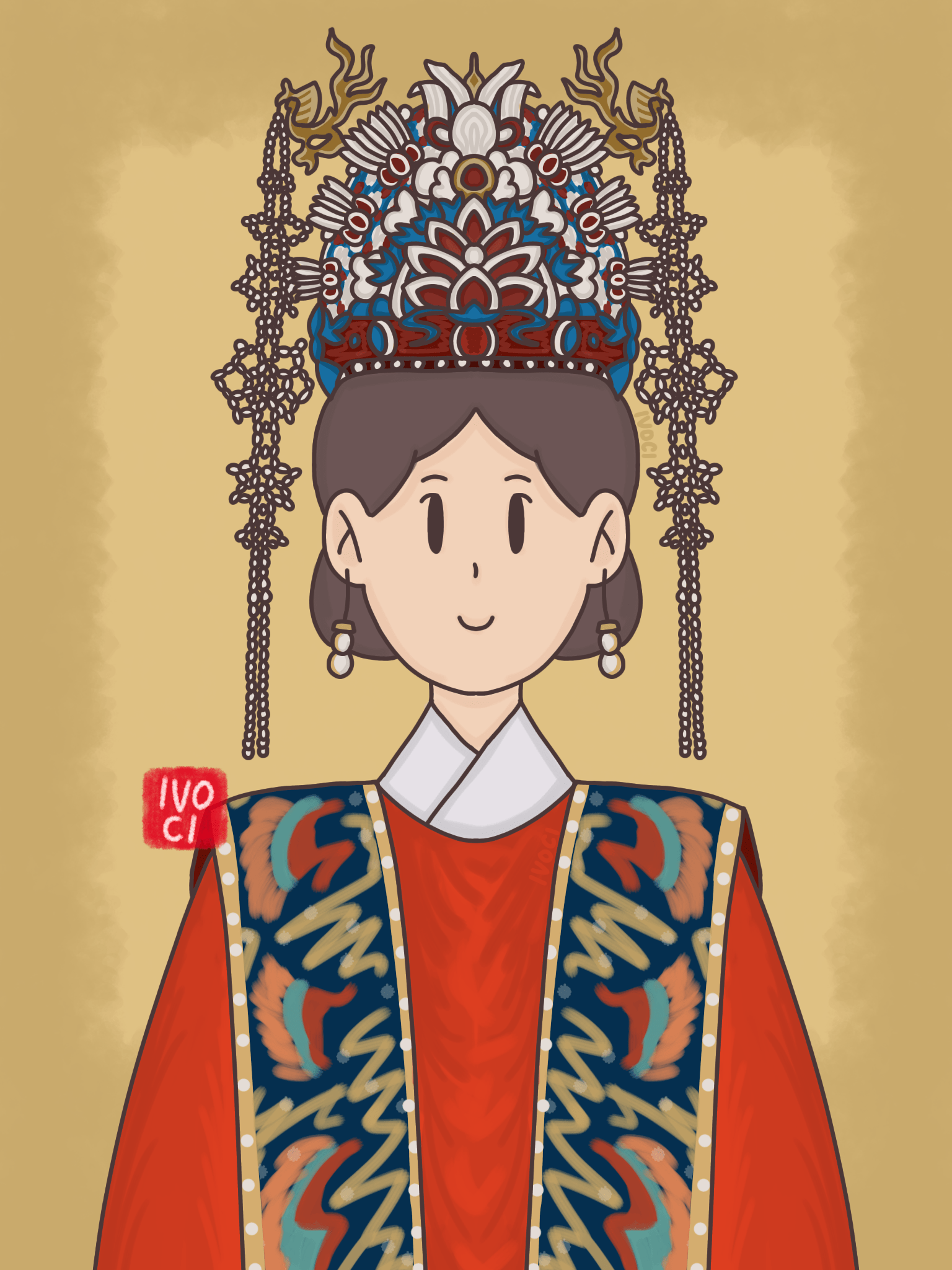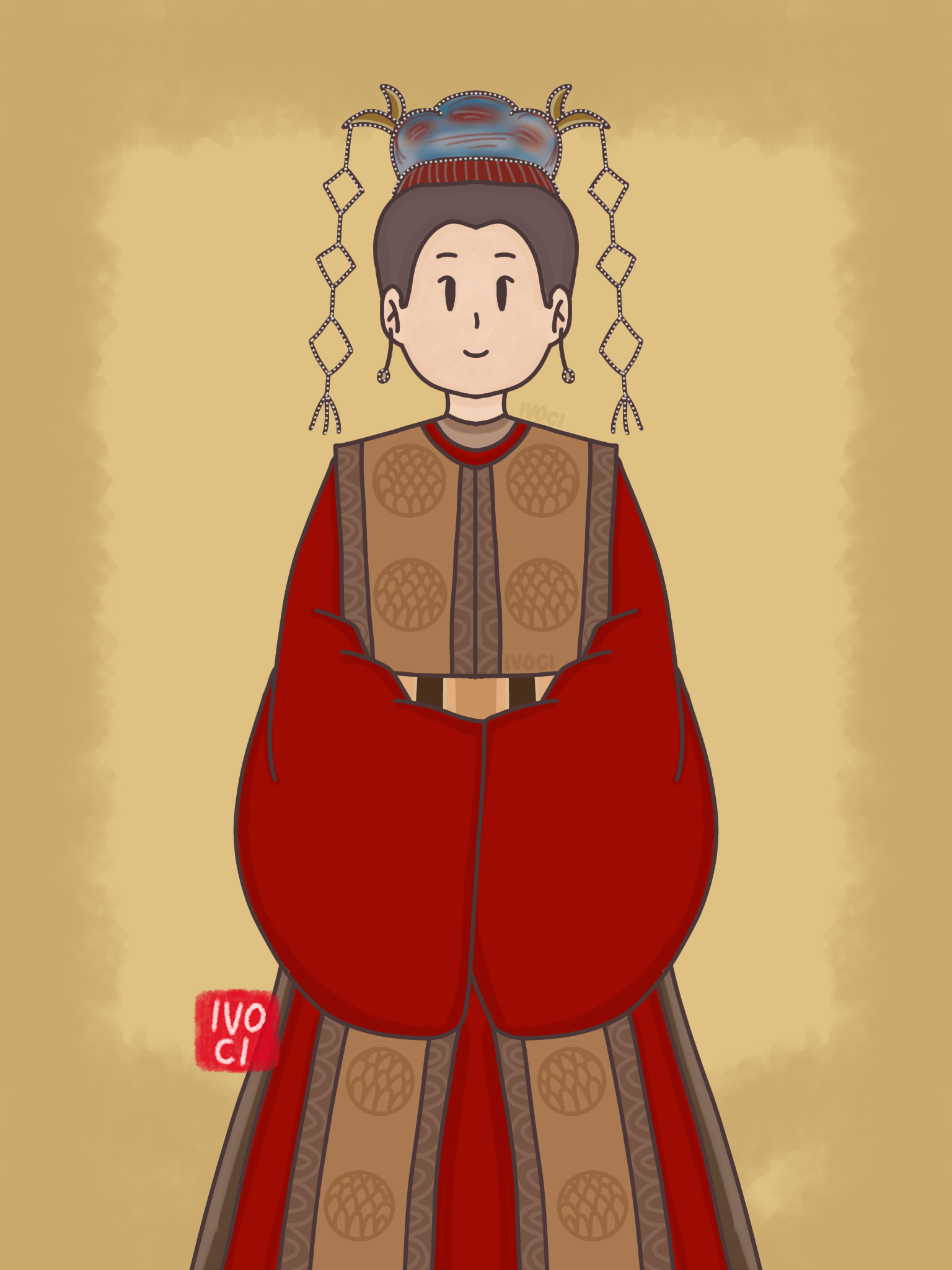Xiapei (Chinese: 霞帔 ; pinyin: xiá pèi), which literally means red cloud scarf, is a type of Chinese clothing accessory in the form of a long scarf, necktie, or vest depending on the time period. Xiapei is worn by women.
It is also referred to as xiapeizhui (Chinese: 霞帔坠 ; pinyin: xiá pèi zhuì) when it is decorated with a peizhui on the front end.
Peizhui (Chinese: 帔坠 ; pinyin: pèi zhuì) ornaments can be made from a variety of materials, such as silver, jade, and gold.
History
Xiapei appeared as early as the Qin dynasty and continues to be used today, although the form of the xiapei evolved over time.
Qin and Han dynasties
Xiapei appeared in the early Qin and Han dynasties and took the form of long, thin silk scarves.
Wei, Jin, Northern and Southern dynasties
During the Wei, Jin, North, and South dynasties, the xiapei was known as an embroidered collar.
Sui and Tang dynasties
But the word “xiapei” first appeared in the Tang dynasty. Zhou Fang, a painter from the Tang dynasty, painted “beautiful women with hairpins” and “beautiful women with fans”, where all the noble ladies were dressed in xiapei.
Xiapei of the Tang dynasty is placed on both women’s arms and dances gracefully with women’s movements.
Xiapei in the Sui and Tang dynasties is often called pibo (Chinese: 披帛 ; pinyin: pī bó).
Song dynasty
In the Song dynasty, xiapei became part of the formal dress worn by Mingfu. Since the Song dynasty, peizhui began to be used to decorate xiapei.
As we can see, the bottom of both sides of the xiapei in the Song dynasty is sewn to form a “V” shape, and there is a round pendant (peizhui) made of gold and jade.
Peizhui or pendants on xiapei aim to ensure that when women walk, the xiapei can be smoothly attached to clothes and naturally hang, ensuring that they always present a dignified and presentable image.
In the Song dynasty, only noble women could use the xiapei, which was a status symbol.
Ming dynasty
In the Ming dynasty, harem imperial concubines and officials’ wives all used xiapei with fengguan to match their outfits. With different levels of identity, the colors and patterns of the xiapei are also different.
The harem imperial concubines were mostly bright red and dark blue, with dragons and phoenixes formed by golden threads. Meanwhile, the official wife is mainly in plain colors, without patterns.
In the Ming dynasty, the xiapei roughly followed the design of the Song dynasty, which can be divided into two designs:
a. Similar to the xiapei in the Song dynasty: the bottom of the xiapei is “V” shaped.
b. Xiapei is used around the neck, which is fixed in front of the neck. The bottom of the xiapei is hung with a jade pendant, a gold pendant, or a silver pendant.
During the Hongwu Period (1368 – 1398 AD) of the Ming dynasty, there were specific rules about what kind of clothing a woman should wear based on her social rank:
a. Women who were ranked 1 and 2 by the Ming emperor had to wear xiapei adorned with gold cloud embroidery and pheasant patterns.
b. Women ranked 3 and 4 must wear a xiapei embroidered with a pattern of golden clouds and peacocks.
c. Women rated 5 should wear a xiapei embroidered with cloud and mandarin duck motifs.
d. Women ranked 6th and 7th must wear a xiapei embroidered with a cloud and magpie motif.
e. Women who are ranked 8th and 9th must wear a xiapei embroidered with a branching pattern.
Qing dynasty
Just like the Ming dynasty, xiapei, along with fengguan, became the everyday clothes of the queens and the formal attire of the wives of senior officials.
But the Ming dynasty xiapei developed into the Qing dynasty xiapei which was a sleeveless vest. This vest consists of 3 parts:
a. The front and back are decorated with rank badges according to the rank of the woman’s husband.
b. Colored tassels adorn the bottom of the vest.
c. Xiapei vest-shaped tied at the side, below the knee, and has a pointed bottom hem.
Style
The Ming dynasty Xiapei was about 14 cm wide and 150 cm long, with a long belt with skilled weaving and embroidery. When worn, it wraps around the neck, hangs over the chest, and is decorated with a pendant. The material of the pendant varies with the status of the wearer.
Qing dynasty’s xiapei, a long vest with a round neck, a pair of plackets, and no sleeves. The length is about 110 cm and the width of the tip is about 65 cm. Early xiapei models were relatively slender and long, forming a straight line from shoulder to tip. As time goes by, the length of the xiapei is shorter, the ends are relatively wide, and the sleeve lines are clearly visible.
Historical Value
As an important part of the traditional Chinese women’s dress system, xiapei has had a great impact on the dress culture and etiquette system, and some concepts and customs can even be seen in modern Chinese weddings.
From its inception to the Ming dynasty, the xiapei underwent a process of changing from popular clothing to exclusive clothing for autocratic rule and expanding the status symbolic meaning of its early basic decorative function.
The Ming dynasty was the peak of the development of xiapei. At this time, xiapei has developed and matured. The government makes detailed rules and regulations on xiapei patterns, colors, and production techniques, and makes strict regulations.
Xiapei, with fengguan is an external expression that symbolizes happiness and represents blessing, and identity. This phenomenon is very popular among the people, and over time, xiapei, with fengguan has gradually become the standard of traditional Chinese marriage in the hearts of many people.
Other
Not only in China but xiapei was also introduced and worn in late Goryeo and Joseon where it was called hapi.





Leave a Reply